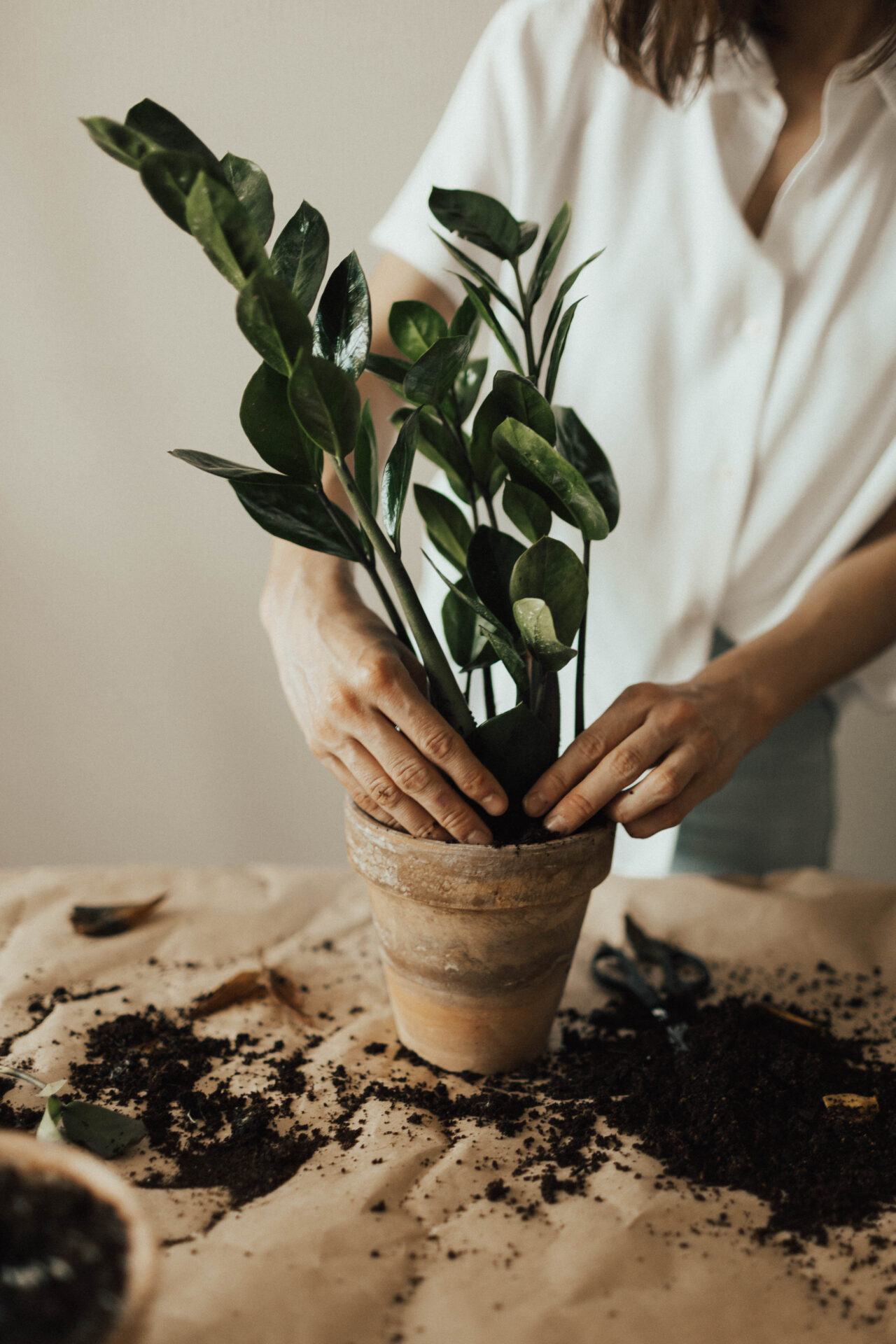Welcome to our latest article, “The Art of Pruning Your Indoor Vertical Garden,” where we delve into the intricate world of maintaining a flourishing and vibrant indoor vertical garden. This comprehensive guide will illuminate the significance of pruning and its impact on plant growth and share expert tips on mastering this essential gardening skill.
As we explore the various techniques and best practices, you will gain the confidence to care for your indoor vertical garden, ensuring optimal plant health, growth, and overall aesthetic appeal. So, whether you are a seasoned gardener or a novice, this article is designed to equip you with the knowledge to transform your indoor vertical garden into a thriving, lush oasis.
Pruning Techniques for Healthy Plant Growth
This section will explore various pruning techniques that promote healthy plant growth in your indoor vertical garden. Mastering these methods will maximize your garden’s potential and ensure a lush and thriving environment for your plants.
We will also touch upon the importance of seasonal pruning, especially in challenging conditions like winter, and reference our previous article on “How to Grow a Thriving Indoor Vertical Garden in Winter.”
Pinching Back: Encouraging Bushy Growth
Pinching back is a simple pruning technique that involves removing the tips of stems and new growth with your fingers or a pair of clean, sharp scissors. This method encourages the plant to branch out and grow bushier, resulting in a fuller appearance. Pinching back is particularly effective for herbs and flowering plants, as it promotes the production of more flowers and foliage.
Deadheading: Prolonging the Blooming Season
Deadheading is the process of removing spent flowers from your plants. By doing this, you improve the overall appearance of your indoor vertical garden and encourage the plant to produce more blooms. Deadheading redirects the plant’s energy from seed production to new flower growth, extending the blooming season and enhancing the vibrancy of your garden.
Thinning Out: Allowing Light and Air Circulation
Over time, plants in an indoor vertical garden can become overcrowded, leading to reduced air circulation and light penetration. Thinning out is a pruning technique to remove excess growth and create space for new, healthy development. To thin out your plants, selectively remove older, weaker stems or branches, allowing more light and air to reach the remaining healthy growth.
Root Pruning: Keeping Plants in Check
Root pruning is an essential technique for maintaining plants in confined spaces, such as the containers of an indoor vertical garden. By carefully trimming the roots of your plants, you can control their size and prevent them from becoming root-bound. Root pruning should be done with clean, sharp tools and requires a gentle touch to avoid damaging the plant’s overall health.
Maintaining a Pruning Schedule: A Year-Round Approach
To ensure the health and vitality of your indoor vertical garden, it is crucial to maintain a regular pruning schedule. This involves monitoring your plants’ growth and performing the necessary pruning techniques throughout the year. By being proactive with your pruning routine, you will be better prepared to tackle challenging growing conditions, as highlighted in our article “How to Grow a Thriving Indoor Vertical Garden in Winter.”
Armed with these pruning techniques, you will be well on your way to cultivating a thriving and visually stunning indoor vertical garden. By understanding the unique needs of your plants and applying the appropriate pruning methods, you can enhance your garden’s overall health and beauty, creating a lush oasis in your indoor space.
Benefits of Pruning Indoor Vertical Gardens
Pruning is essential for maintaining a healthy and thriving indoor vertical garden. In this subsection, we will delve into the numerous benefits associated with proper pruning techniques. From promoting vigorous growth to preventing diseases and pests, these advantages demonstrate the significance of regular pruning in indoor vertical gardening.
Boosting Plant Health and Vigor
One of the primary benefits of pruning is promoting plant health and growth. Removing dead or damaged foliage enables the plant to redirect its energy and resources towards new, healthy development. This results in a more robust and vigorous plant better equipped to withstand environmental stressors and produce abundant flowers or foliage.
Enhancing Aesthetic Appeal
A well-maintained indoor vertical garden is a sight to behold. Pruning is crucial in shaping and sculpting your plants, creating a visually pleasing arrangement that complements your interior space. Regularly trimming and shaping your plants maintains a sense of order and balance within your garden, elevating its overall aesthetic appeal.
Preventing Diseases and Pests
Pruning is a proactive measure for preventing common plant diseases and pests. Removing dead or diseased foliage reduces the likelihood of fungal infections or infestations taking hold in your indoor vertical garden. Additionally, proper pruning techniques improve air circulation and light penetration, creating an environment that discourages the growth of mold and mildew.
Encouraging Flower and Fruit Production
Pruning can significantly impact the quality and quantity of blooms and fruits for those with flowering or fruiting plants in their indoor vertical garden. By removing spent flowers and trimming back excessive growth, your plants can focus their energy on producing more flowers and fruits, resulting in a bountiful harvest and a more vibrant display of color.
Improving Space Management
The available space within your home often limits indoor vertical gardens. Pruning allows you to manage the growth of your plants, ensuring they remain within the boundaries of their designated containers and do not infringe on the surrounding plants. This practice enables you to maintain a well-organized garden that maximizes the use of vertical space.
These benefits demonstrate that pruning is an indispensable aspect of indoor vertical gardening. By mastering the various pruning techniques and maintaining a regular pruning schedule, you can enjoy a healthy, vibrant, and productive indoor vertical garden that adds life and beauty to your home.
Essential Tools for Indoor Garden Pruning
Having the right tools at hand is crucial when pruning your indoor vertical garden. A well-equipped toolkit makes the pruning process more efficient and minimizes the risk of damaging your plants. This subsection will explore some essential tools for indoor garden pruning, highlighting their unique features and functions. Investing in high-quality pruning tools will make you better prepared to maintain the health and beauty of your indoor vertical garden.
Precision Pruners: For Delicate Snips and Trims
Precision pruners, also known as micro-tip pruning snips or fine-tip pruning shears, are ideal for making delicate cuts on small or hard-to-reach plants. These pruners feature narrow, sharp blades that allow you to snip and trim precisely, minimizing the risk of damaging surrounding foliage. When selecting precision pruners, look for a pair with ergonomic handles and a spring-action design for added comfort and ease of use.
Anvil or Bypass Pruning Shears: Tackling Thicker Stems
Bypass or anvil pruning shears is the go-to tool for more robust plants with thicker stems. Anvil pruners have a straight blade that cuts against a flat surface, while bypass pruners have a curved blade that cuts in a scissor-like action. Both types of pruning shears are effective for cutting through thicker stems, but bypass pruners are generally considered more suitable for living plants, as they make cleaner cuts with less risk of crushing the stem.
Long-Reach Pruners: Accessing Hard-to-Reach Spots
Indoor vertical gardens often involve plants positioned at various heights, making it challenging to access certain areas for pruning. Long-reach pruners, also known as extendable pruners, feature telescopic handles that allow you to easily reach higher or more distant plants. These versatile tools are available in anvil and bypass styles, ensuring you can make precise cuts in hard-to-reach areas without compromising your plants’ health.
Gardening Scissors: Multipurpose Cutting Tool
Sharp, high-quality gardening scissors are indispensable to any indoor gardener’s toolkit. These versatile scissors can be used for various pruning tasks, such as trimming leaves, cutting back growth, and even snipping roots during repotting. Opt for a stainless steel pair with comfortable, non-slip handles for durability and ease of use.
Pruning Saw: Managing Larger Branches
While not as commonly required for indoor vertical gardens, a pruning saw may be necessary for managing larger branches or plants with woody stems. Pruning saws feature a serrated blade that easily cuts through thicker stems, ensuring a clean and efficient pruning process. If you need to tackle larger pruning tasks, investing in a high-quality pruning saw will make the job much easier.
Equipped with these essential pruning tools, you will be well-prepared to maintain the health and beauty of your indoor vertical garden. By selecting the right tools for the task, you will ensure that your pruning efforts are efficient and effective, contributing to the overall success of your indoor gardening endeavors.
How to Identify Plants Needing Pruning
This subsection will explore the signs and indicators your indoor vertical garden plants may require pruning. By learning to recognize these telltale signs, you can proactively address any issues before they impact the health and appearance of your garden.
We will discuss specific plant characteristics that signal the need for pruning and offer guidance on approaching each situation. By developing a keen eye for plants needing attention, you can ensure your indoor vertical garden remains lush, healthy, and visually appealing.
Overgrown Foliage: Regaining Balance and Structure
One of the most apparent signs that a plant requires pruning is overgrown foliage. If you notice that a plant has become too large for its container or is encroaching on its neighboring plants, it’s time for a trim. Pruning overgrown plants will help restore balance and structure within your garden and improve air circulation and light penetration for healthier plant growth.
Yellowing or Wilted Leaves: Removing Unhealthy Growth
When you spot yellowing or wilted leaves on your plants, it may indicate that they need pruning. Removing these unhealthy leaves allows the plant to redirect its energy towards new, healthy growth. Monitoring your plants regularly for any signs of decay or disease is essential, as timely pruning can prevent the problem from spreading to other parts of the plant or neighboring plants.
Leggy Growth: Encouraging Bushier Plants
Legginess occurs when plants become spindly and elongated, often due to insufficient light. If you notice your plants becoming leggy, you should intervene with some pruning. Trimming back leggy growth encourages the plant to produce more side branches, making a bushier and more robust appearance.
Spent Blooms: Prolonging the Flowering Season
When flowers on your plants begin to fade, wilt, or fall off, it is a clear sign that they require deadheading. As previously discussed, deadheading involves removing spent blooms to encourage the plant to produce more flowers. By promptly deadheading your plants, you can prolong their flowering season and enhance the overall appearance of your indoor vertical garden.
Root-Bound Plants: Time for a Trim and Repot
If your plants have become root-bound, meaning their roots have outgrown their container and are densely packed, it may be time for some root pruning. Root pruning and repotting the plant in a larger container will relieve the stress on the plant and allow it to grow more freely. When repotting, carefully trim any excess or tangled roots to promote healthy root growth.
By staying vigilant and regularly inspecting your indoor vertical garden, you can identify the plants that may require pruning before any significant issues arise. Whether removing unhealthy growth, trimming overgrown foliage, or encouraging bushier plants, timely pruning can significantly benefit your garden’s overall health and appearance.
With practice and experience, you will develop a keen eye for spotting plants needing attention, ensuring your indoor vertical garden remains a thriving and beautiful sanctuary.
Pruning Tips for Common Vertical Garden Plants
In this subsection, we will explore pruning tips tailored to some of the most popular plants found in indoor vertical gardens. By understanding the specific pruning requirements of these common plants, you can ensure their optimal growth and overall health. With the knowledge of how and when to prune these plants, you will be better equipped to maintain a thriving and visually appealing indoor vertical garden.
Herbs: Encouraging Fuller and More Productive Plants
Herbs, such as basil, mint, and rosemary, are popular for indoor vertical gardens due to their culinary and aromatic properties. Regularly pinch back the tips of new growth to encourage bushier growth and prevent your herbs from becoming leggy. This will stimulate the production of more foliage, resulting in a fuller and more productive plant. Additionally, removing flowers as they appear on your herbs will help to prolong their leaf production and maintain their flavor.
Ferns: Promoting Lush and Vibrant Foliage
Ferns are popular for indoor vertical gardens due to their lush, green foliage and adaptability to low-light conditions. Pruning ferns is relatively simple, as it primarily involves removing any dead or damaged fronds at their base. This will help to maintain the plant’s vibrant appearance and encourage new growth. For larger fern varieties, such as Boston ferns, you may also need to trim back overgrown fronds to maintain a balanced and visually pleasing shape.
Pothos and Philodendrons: Managing Trailing Growth
Pothos and philodendrons are well-suited to indoor vertical gardens, as their trailing growth habit makes them ideal for draping over containers or climbing up support structures. To maintain a healthy and manageable growth pattern, trim back any excessively long vines to your desired length. This will encourage the plant to produce new side shoots and maintain a lush appearance. Regularly removing yellowing or damaged leaves will also help to preserve the plant’s overall health and aesthetic appeal.
Succulents: Ensuring Compact and Attractive Growth
Succulents, such as echeveria and jade plants, are popular for indoor vertical gardens due to their low-maintenance nature and unique appearance. Remove elongated or leggy stems to ensure compact and attractive growth, and trim any overly large leaves. When pruning succulents, using clean, sharp tools is crucial to prevent damage and reduce the risk of infection. Additionally, give your succulents plenty of light to discourage leggy growth and maintain their vibrant colors.
Orchids: Supporting Healthy Blooms and Growth
Orchids can add a touch of elegance and color to your indoor vertical garden. Proper pruning is essential for maintaining their health and promoting the production of new blooms. After an orchid has finished blooming, trim the flower spike about an inch above the node where the first flower appeared. This will encourage the plant to produce a new flower spike in the coming months. Regularly remove any yellowing or damaged leaves to maintain a healthy and visually appealing orchid.
By familiarizing yourself with the specific pruning requirements of these common vertical garden plants, you can confidently maintain their health and beauty. Each plant has unique needs, and understanding these will help you tailor your pruning approach to ensure the continued success of your indoor vertical garden. With the proper knowledge and techniques, you can cultivate a thriving and visually stunning oasis showcasing diverse plant species.







Leave a reply